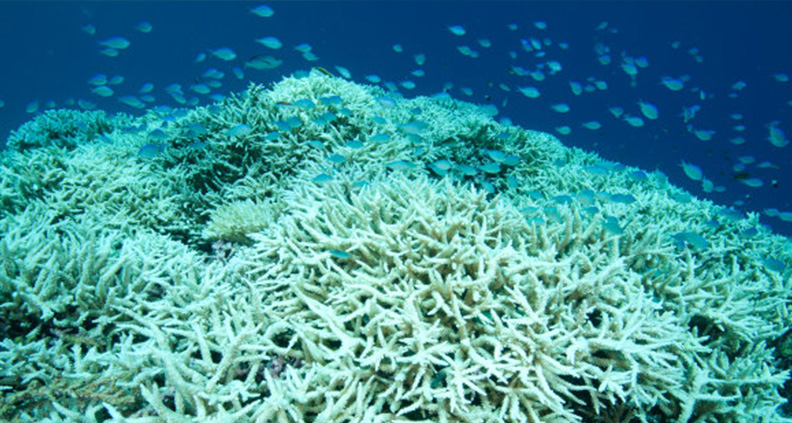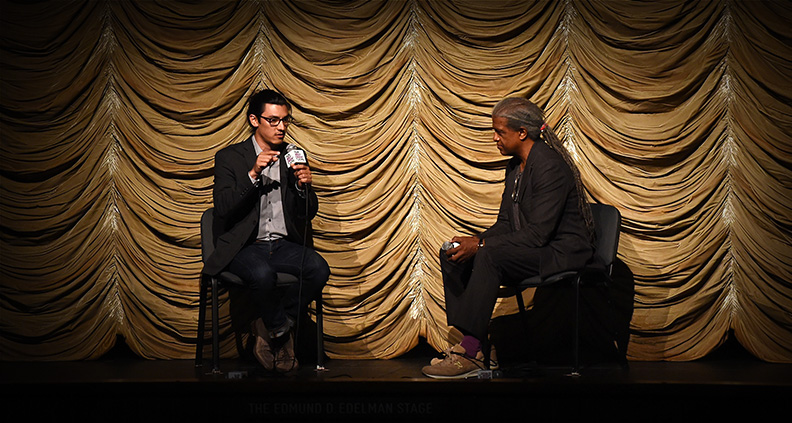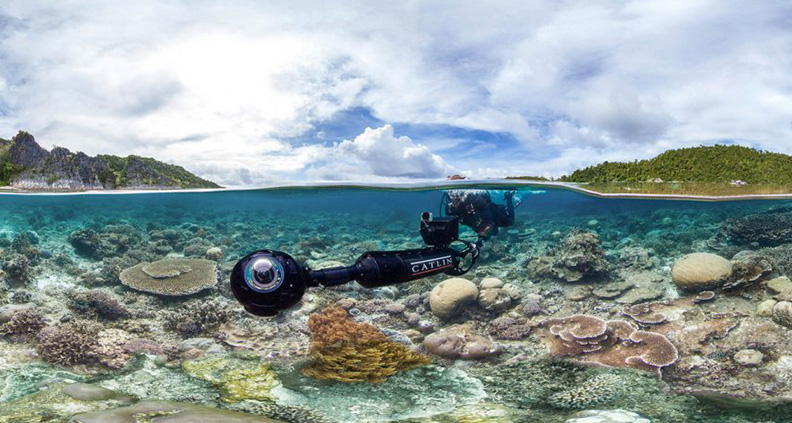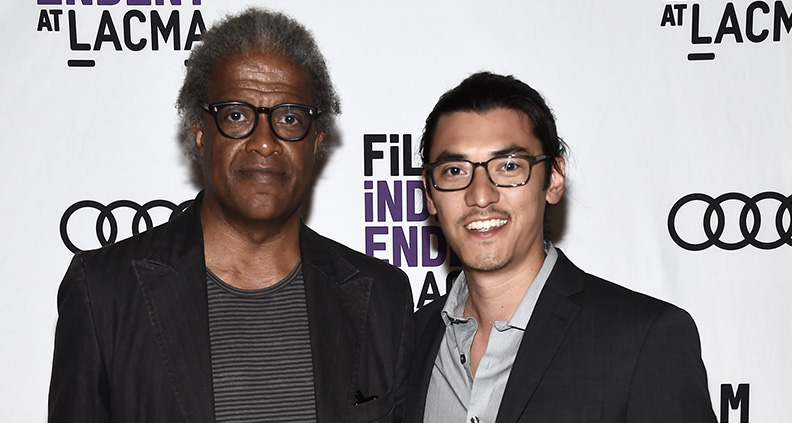‘Chasing Coral’ Director Explores Environmental Issues with Emotional Storytelling
On July 10, documentarian Jeff Orlowski’s newest film Chasing Coral screened at Film Independent at LACMA, followed by an insightful conversation between Orlowski and Film Independent at LACMA curator Elvis Mitchell. The film—which visually and beautifully presents the stark ramifications of climate change on the world’s coral reef population as well as the stark reality of the danger our planet faces—premiered at Sundance earlier this year and is on Netflix and playing in theaters now.
Although Orlowski began by saying the film contained “quite a bit of sadness” Chasing Coral instills far more hope in viewers than one would expect, given the subject matter. The director wanted to create this document chronicling human civilization’s dependence on the environmental stability. “For me, this story is so much bigger than coral reefs,” Orlowski said. “It’s about how human civilization continues on this planet as we move forward.”

Making Coral was a huge education for the director about how essential the oceans are to sustaining life on Earth. Fresh from studying anthropology in college, the 23-year-old Orlowski met National Geographic photographer Jeff Baelog, traveling the world and collecting footage of melting glaciers—footage that eventually turned into Orlowski’s 2012 documentary Chasing Ice, an experience Orlowski described as being his “film school.”
Taking what he learned making Chasing Ice, Orlowski wanted Coral’s finale to capture an emotional transition, using time-lapse photography of a coral reef’s decay. By the end of the film the director hoped audiences would know the difference between what healthy coral looks like versus stressed and dying coral by “teaching” the visual language of coral reefs: colors, fuzziness, white bleach, etc. Their intention was to frame Chasing Coral as an adventure story, not as a climate change documentary—connecting audiences to a relevant emotional story rather than simply statistics.
However, it wasn’t easy trying to capture the rapid change coral reefs are undergoing. The team faced several issues while filming. One major technical issue was the malfunctioning of their camera equipment. After the production realized how fast the coral was changing, the team had to go in and document the change manually, which meant daily rounds of tedious work, venturing to the same spots of ocean to take the same photo for weeks on end.

“The reality of this issue is far greater than most people know,” Orlowski said. “After Chasing Ice, I thought I knew everything there was to know about climate change. But the problem of climate change is the ocean [because] the ocean is absorbing this vast amount of heat. Climate change is ocean change.”
Another constant struggle the team faced was asking themselves how they could get the audience to understand the “red flag” environmental emergency happening while showing off such visually beautiful images. Mitchell described Coral as a documentation of the destruction of the planet, calling coral depletion “another annihilation of species on the planet”—a fact vividly depicted in the documentary.
Mitchell was curious to know when the director felt he could tell the story visually instead of letting information and statistics carry the film’s narrative weight. “First and foremost you’re a filmmaker, and you’re using the visual grammar of film to tell the story,” he said.
Orlowski noted a difference between information and story, saying he felt like “a translator” for scientists, trying to communicate the severity of what scientists know to average moviegoers. For Chasing Coral especially, he tried to push story first and use information as the background—the stuff you need to know to understand why the story is relevant.

Orlowski also shared a story about screening the film in central Ohio where one congressman had repeatedly denied climate change. The filmmakers saturated the district enough to where, after six weeks, they succeeded in getting the congressman to acknowledge the reality of climate change—they figured out a methodology of taking the content and story and creating tangible impact with it.
As successful as Chasing Ice was upon release, Orlowski still said that he feels Chasing Coral has a greater opportunity to create change. He hopes the documentary will provide enough visual evidence to encourage increased conversation—especially since coral reefs are dying too fast for the rates of recovery to possibly keep up.
The ability to keep coral reefs on the planet is dependent on surviving the next couple of decades. At the end of the documentary, the film presents a possible way to sustain the coral reef population. If and when the climate is stabilized, coral reefs will have the opportunity to regenerate. Orlowski explained that corals partake in a sort of “spawning” on certain full moons of the year, releasing their eggs as a way of repopulating (something he described as a “coral orgy.”) Orlowski is confident that nature can heal itself if we give it a chance—we just have to stop attacking it as brutally as we are right now.

It’s certainly not a pretty scenario, but the director said that the shift seen in environmental efforts towards clean and sustainable energy indicates that younger people get it and that technology is shifting. Orlowski couldn’t afford electric cars and solar panels a few years ago, but now says the price point has gotten so competitive that, in many cases, going green is often the cheaper option. “It’s not just the cleaner, more ethical option. It’s the faster, sexier, more fun option—and you’re saving money,” he said.
“It’s never been more urgent that we take action, and it’s never been cheaper,” he said. “Every hour, every day, every month that we wait, the opportunity for us is only going to become more expensive to address.”
For more information, please visit the film’s website. To see what’s coming up at Film Independent at LACMA, click here. And learn how to become a Member of Film Independent by clicking here.